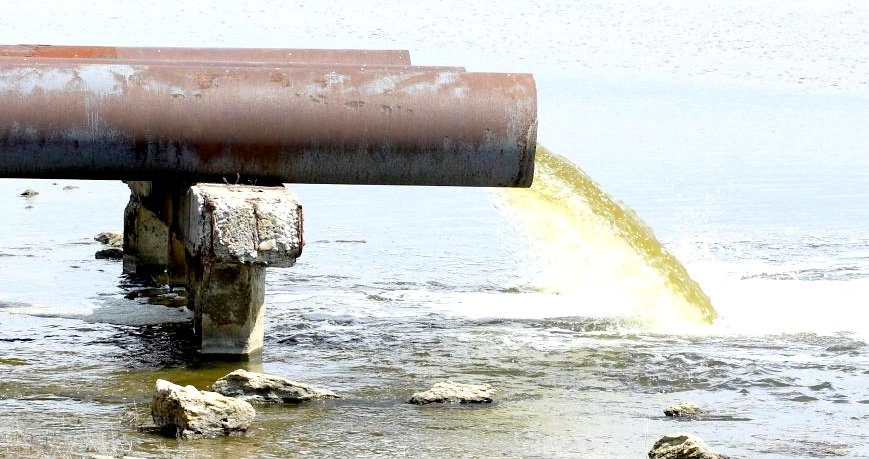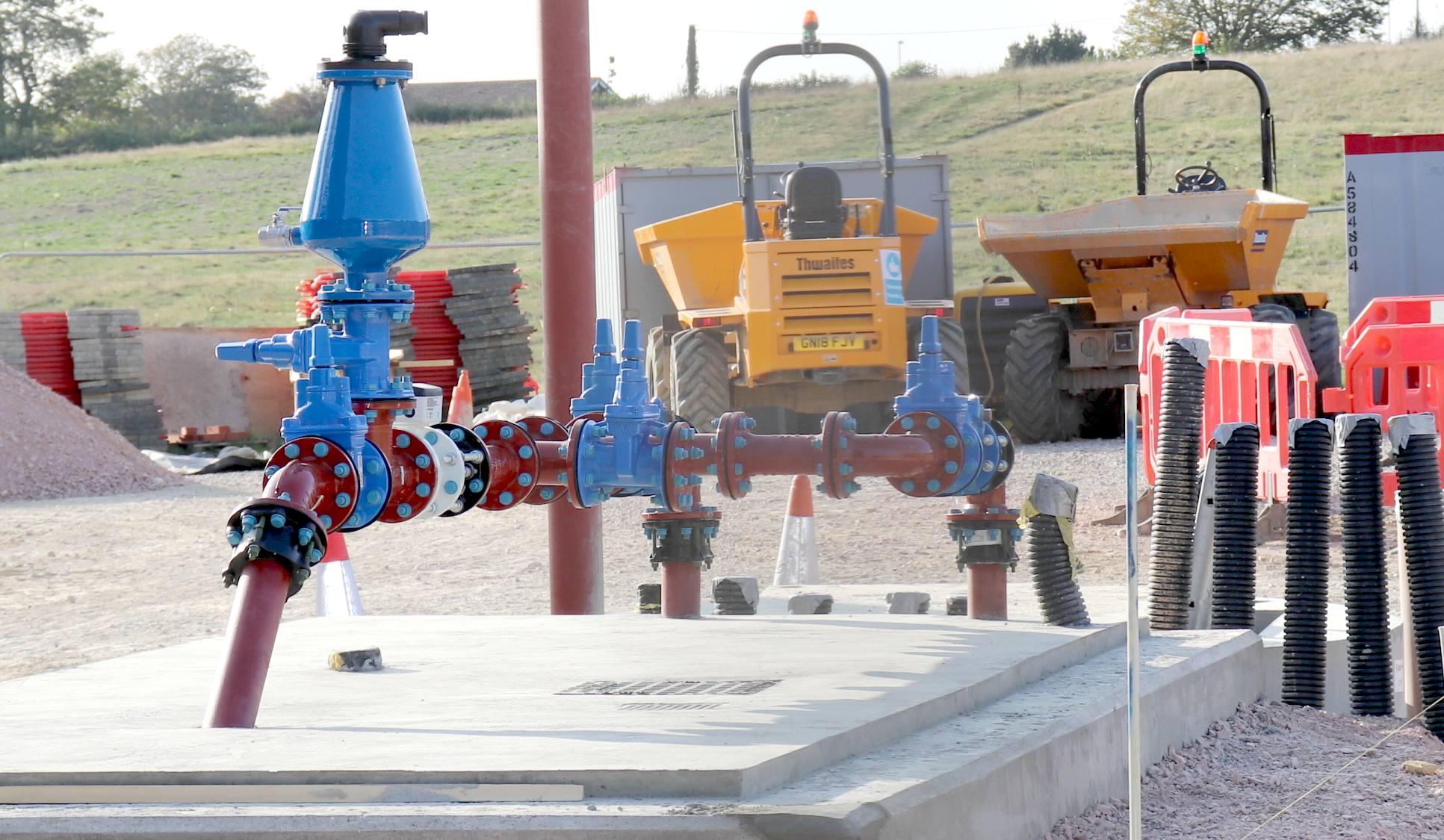
POLLUTION
PUMPING - Shit handling pipes, installation at Shit
Creek, Herstmonceux, the field adjacent is to be built on with 70
houses flushing excrement down a network of pipes, that will not be
treated, and will eventually be pumped out into the sea as raw sewage.
Collectively, that waste is circulating in the ocean, finding its way
into the Atlantic and Mediterranean and causing algal blooms. Such as
the sargassum
crisis in the Gulf of Mexico and Caribbean Sea. Water companies don't
give a fig, because Ofwat and/or the Environment Agency are just sitting
on their hands. What they should be doing is stopping house building
that cannot comply, by virtue of a lack of appropriate infrastructure.
The
importance of a supply of fresh (potable) drinking water cannot be
overstated. Humans cannot live without it, nor can the flora and other
fauna that share the planet with us.
Unfortunately, the world has a water shortage, with some countries
not having a distribution system of piped H2O, that we take for granted
in the UK and most of European countries, Australia and North America.
But,
despite countries like the UK being relatively well rained on, with many reservoirs and such,
the United Kingdom still has water shortages, hosepipe
bans and the like. And with the house building boom in the South of
England, water shortages will get worse, as will the sewage disposal
issue, where untreated effluence is being pumped into the English
Channel, for lack of enforcement by the proper authorities.
We
have: tapped water, bottled water, spring water, well water, rainwater,
mineral water, seawater, freshwater, and aqua pura.
Aqua Pura, in Latin, means "pure water".
Mineral water is water from a mineral spring that contains various minerals, such as salts and sulfur compounds. Mineral water may usually be still or sparkling (carbonated/effervescent) according to the presence or absence of added gases.
Traditionally, mineral waters were used or consumed at their spring sources, often referred to as "taking the waters" or "taking the cure", at places such as spas, baths, or wells. The term spa was used for a place where the water was consumed and bathed in; bath where the water was used primarily for bathing, therapeutics, or recreation; and well where the water was to be consumed.
Today, it is far more common for mineral water to be bottled at the source for distributed consumption. Travelling to the mineral water site for direct access to the water is now uncommon, and in many cases not possible because of exclusive commercial ownership rights.
There are more than 4,000 brands of mineral water commercially available worldwide.
In many places the term "mineral water" is colloquially used to mean any bottled carbonated water or soda water, as opposed to tap water.
The U.S. Food and Drug Administration classifies mineral water as water containing at least 250 parts per million total dissolved solids (TDS), originating from a geologically and physically protected underground water source. No minerals may be added to this water.
In the European Union, bottled water may be called mineral water when it is bottled at the source and has undergone no or minimal treatment. Permitted is the removal of iron, manganese, sulfur and arsenic through decantation, filtration or treatment with ozone-enriched air, insofar as this treatment does not alter the composition of the water as regards to the essential constituents which give it its properties. No additions are permitted except for
carbon
dioxide, which may be added, removed or re-introduced by exclusively physical methods. No disinfection treatment is permitted, nor is the addition of any bacteriostatic agents.
QUALITIES
Water differs from most liquids in that it becomes less dense as it freezes. In 1 atm pressure, it reaches its maximum density of 1,000 kg/m3 (62.43 lb/cu ft) at 3.98 °C (39.16 °F). The density of ice is 917 kg/m3 (57.25 lb/cu ft), an expansion of 9%. This expansion can exert enormous pressure, bursting pipes and cracking rocks.
Pure water has a low electrical conductivity, which increases with the dissolution of a small amount of ionic material such as common salt.
Liquid water can be split into the elements hydrogen and
oxygen by passing an
electric current through
it - a process called electrolysis. The decomposition requires more energy input than the heat released by the inverse process (285.8 kJ/mol, or 15.9 MJ/kg).
Liquid water can be assumed to be incompressible for most purposes: its compressibility ranges from 4.4 to 5.1×10−10 Pa−1 in ordinary conditions. Even in oceans at 4 km depth, where the pressure is 400 atm, water suffers only a 1.8% decrease in volume.
The viscosity of water is about 10−3 Pa·s or 0.01 poise at 20 °C (68 °F), and the speed of sound in liquid water ranges between 1,400 and 1,540 meters per second (4,600 and 5,100 ft/s) depending on temperature. Sound travels long distances in water with little attenuation, especially at low frequencies (roughly 0.03 dB/km for 1 kHz), a property that is exploited by
cetaceans and humans for communication and environment sensing (sonar).
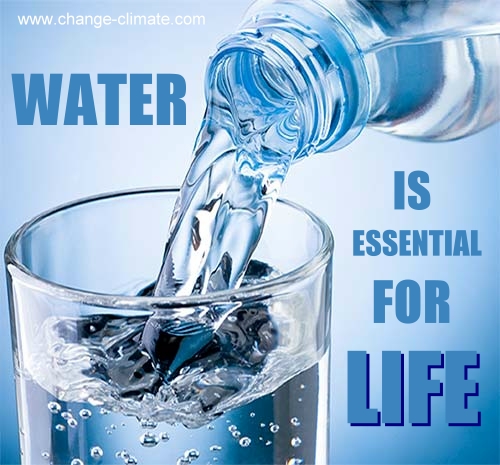
So,
please leave ours alone : )
Water plays an important role in the world economy. Approximately 70% of the freshwater used by humans goes to
agriculture. Fishing in salt and fresh water bodies is a major source of food for many parts of the world, providing 6.5% of global
protein, though quantities vary from report to report.
Much of the long-distance trade of commodities (such as oil, natural gas, and manufactured products) is transported by boats through seas, rivers, lakes, and canals. Large quantities of water, ice, and steam are used for cooling and heating, in industry and homes. Water is an excellent solvent for a wide variety of substances both mineral and organic; as such it is widely used in industrial processes, and in cooking and washing.
Water, ice and snow are also central to many sports and other forms of entertainment, such as swimming, pleasure boating,
boat
racing, surfing, sport fishing, diving, ice skating and skiing.
Water covers about 71% of the Earth's surface, mostly in seas and oceans (about 96.5%). Small portions of water occur as groundwater (1.7%), in the glaciers and the ice caps of Antarctica and Greenland (1.7%), and in the
air as vapor, clouds (consisting of ice and liquid water suspended in air), and precipitation (0.001%). Water moves continually through the water cycle of evaporation, transpiration (evapotranspiration), condensation, precipitation, and runoff, usually reaching the sea.
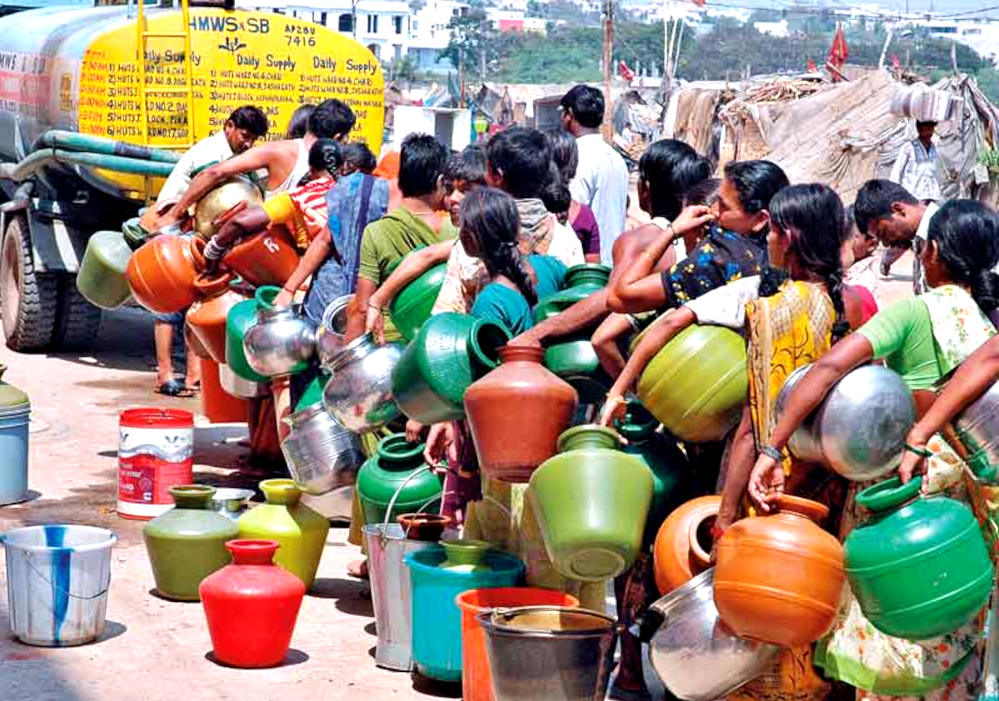
WE
ALL NEED TO DRINK - In some countries there are no groundwater
pipes. Water is too valuable. Sometimes more expensive than petroleum.
Water tanker keep the human population hydrated. But it is demanding and
increases carbon footprints, where diesel is used for transport.
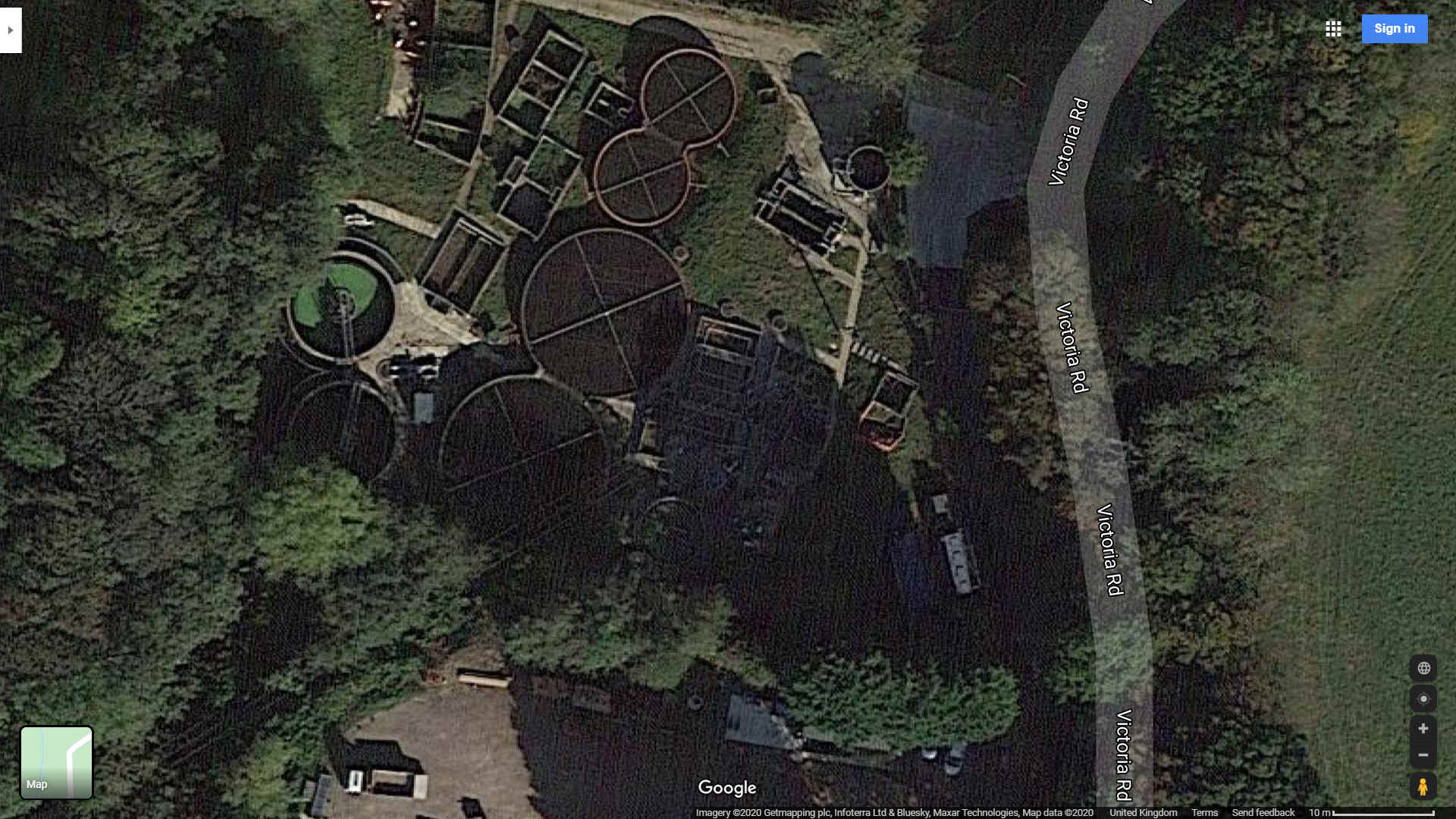
INADEQUATE -
It looks like a good installation, and it probably was when it was
constructed, but unfortunately, councils in the UK have embarked on a
climate changing house building boom with tragic consequences - plants
like this cannot cope with the extra shit, including the diatribe spoken
at council meetings as they hand out more consents for unaffordable
housing, when what the country needs is low carbon sustainable housing.
But that does not suit the kleptocrats, who don't know how to balance
their books without CIL
payments, that they have no intention of spending on the massively
strained infrastructure.
SOUTHERN
WATER
The
contractors for sewage disposal in
Herstmonceux is Southern
Water. They are up to their necks in the shit business as their bread and
butter, but unable to operate legally, discharging untreated waste into
the sea - and caught red-handed in the act. So how are they getting away
with it?
WHAT IS WATER NEUTRALITY?
The definition of water neutrality in Natural England’s Statement is taken from that
used in the final report of Water Neutrality Study: Part A – Individual Local Authority
Areas;
“For every new development, total water use in the region after the development must
be equal to or less than the total water-use in the region before the new development.”
HOW IS WATER NEUTRALITY ACHIEVED?
Water neutrality is achieved through a combination of water efficiency measures for
new developments to reduce the water use per person (called per capita consumption).
The amount of
water from new homes, offices and other developments that use public water supply in the Sussex North water supply zone is then calculated
on an individual or cumulative basis to produce a predicted “demand” for water from
growth.
This total amount of water from growth is then offset by reducing the amount of
water currently used in the Sussex North water supply zone.
MEASURES THAT COULD BE APPLIED INCLUDE:
• household and non-household visits (also called water audits) to provide
advice on the wise use of water, and to fit water saving devices
• expansion of Southern Water’s leakage reduction programme above their
business plan
• extension to the metering programme followed by adoption of smart meters
at a faster rate than required in the existing water company business plan
• adoption of rainwater harvesting or grey water recycling in new builds and
retrofitting them in existing housing
• where practical, adoption of a largescale rainwater harvesting scheme to
remove demand from toilet flushing in a large business park
Southern Water already have an ambitious programme of water efficiency measures as
part of their Target 100 activities.
This limits the options that the Local Authorities have to independently achieve neutrality as any measure to achieve neutrality must be in addition to measures already planned.
Further discussion is recommended with Southern Water to understand the extent of the Target 100 programme, what contribution could be made to neutrality from measures it contains, and whether there is an opportunity to go faster or further than the Southern Water’s plan.
The analysis in this report shows that a package of measures is likely to be required in order to achieve neutrality, with no one measure likely to offset the total demand.
Global
warming is likely to increase the risk of water shortages, according
to a report from the Climate
Change Committee.
HOW LONG WILL WATER NEUTRALITY BE REQUIRED?
It is likely that achieving water neutrality will be important for as long as the adverse effect risk from water supply abstraction continues. This may well remain the case until the Habitats Sites in question are restored to favourable conservation status. Though there is an investigation to try to resolve the uncertainties this is not thought likely to remove the adverse effect risk with certainty.
It should be possible to phase out the requirement for water neutrality once a sustainable long-term water supply has been secured for the region, and this is close enough to being delivered that the commencement of use of any development being assessed is not likely to occur before delivery of this supply.
WHERE DOES THE NATURAL ENGLAND STATEMENT APPLY?
At present the Natural England Statement applies to development that requires a public water supply from
Southern Water’s Sussex North water supply zone. That said, the general principle could be applied to any proposed development site, that feed from or to sites where habitats are at potentially risk.
Especially so as our climate continues to warm up.
FARMING & FERTILIZERS - JUDGMENT OF THE COURT (Second Chamber)
7 November 2018 (*) In Joined Cases C‑293/17 and C‑294/17, On those grounds, the Court (Second Chamber) hereby rules:
1. Article 6(3) of Council Directive 92/43/EEC of 21 May 1992 on the conservation of natural habitats and of wild fauna and flora must be interpreted as meaning that the grazing of cattle and the application of
fertilisers on the surface of land or below its surface in the vicinity of Natura 2000 sites may be classified as a ‘project’ within the meaning of that provision, even if those activities, in so far as they are not a physical intervention in the natural surroundings, do not constitute a ‘project’ within the meaning of Article 1(2)(a) of Directive 2011/92/EU of the European Parliament and of the Council of 13 December 2011 on the assessment of the effects of certain public and private projects on the environment.
2. Article 6(3) of Directive 92/43 must be interpreted as meaning that a recurring activity, such as the application of fertilisers on the surface of land or below its surface, authorised under national law before the entry into force of that directive, may be regarded as one and the same project for the purposes of that provision, exempted from a new authorisation procedure, in so far as it constitutes a single operation characterised by a common purpose, continuity and, inter alia, the location and the conditions in which it is carried out being the same. If a single project was authorised before the system of protection laid down by that provision became applicable to the site in question, the carrying out of that project may nevertheless fall within the scope of Article 6(2) of that directive.
3. Article 6(3) of Directive 92/43 must be interpreted as not precluding national programmatic legislation which allows the competent authorities to authorise projects on the basis of an ‘appropriate assessment’ within the meaning of that provision, carried out in advance and in which a specific overall amount of nitrogen deposition has been deemed compatible with that legislation’s objectives of protection. That is so, however, only in so far as a thorough and in-depth examination of the scientific soundness of that assessment makes it possible to ensure that there is no reasonable scientific doubt as to the absence of adverse effects of each plan or project on the integrity of the site concerned, which it is for the national court to ascertain.
4. Article 6(3) of Directive 92/43 must be interpreted as not precluding national programmatic legislation, such as that at issue in the main proceedings, exempting certain projects which do not exceed a certain threshold value or a certain limit value in terms of nitrogen deposition from the requirement for individual approval, if the national court is satisfied that the ‘appropriate assessment’ within the meaning of that provision, carried out in advance, meets the criterion that there is no reasonable scientific doubt as to the lack of adverse effects of those plans or projects on the integrity of the sites concerned.
5. Article 6(3) of Directive 92/43 must be interpreted as precluding national programmatic legislation, such as that at issue in the main proceedings, which allows a certain category of projects, in the present case the application of fertilisers on the surface of land or below its surface and the grazing of cattle, to be implemented without being subject to a permit requirement and, accordingly, to an individualised appropriate assessment of its implications for the sites concerned, unless the objective circumstances make it possible to rule out with certainty any possibility that those projects, individually or in combination with other projects, may significantly affect those sites, which it is for the referring court to ascertain.
6. Article 6(3) of Directive 92/43 must be interpreted as meaning that an ‘appropriate assessment’ within the meaning of that provision may not take into account the existence of ‘conservation measures’ within the meaning of paragraph 1 of that article, ‘preventive measures’ within the meaning of paragraph 2 of that article, measures specifically adopted for a programme such as that at issue in the main proceedings or ‘autonomous’ measures, in so far as those measures are not part of that programme, if the expected benefits of those measures are not certain at the time of that assessment.
7. Article 6(2) of Directive 92/43 must be interpreted as meaning that measures introduced by national legislation, such as that at issue in the main proceedings, including procedures for the surveillance and monitoring of farms whose activities cause nitrogen deposition and the possibility of imposing penalties, up to and including the closure of those farms, are sufficient for the purposes of complying with that provision.
[Signatures]
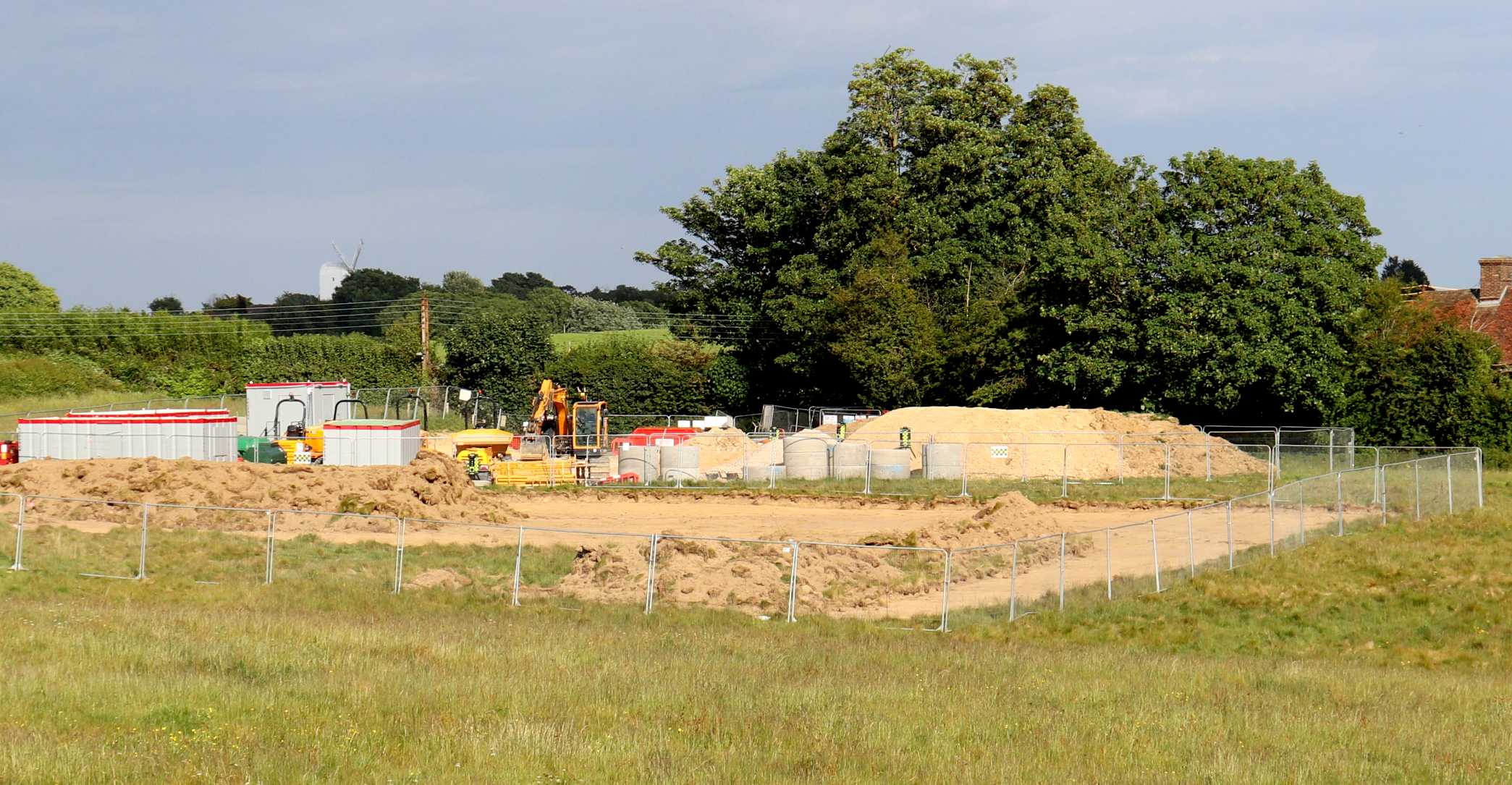
MAY
2020 - Southern
Water getting stuck into their newest shit pumping station in
Herstmonceux, Sussex, knowing full well that the Human feces (or faeces)
will be disgorged into English
Channel, as untreated sewage.
LINKS
& REFERENCE
https://www.ofwat.gov.uk/
